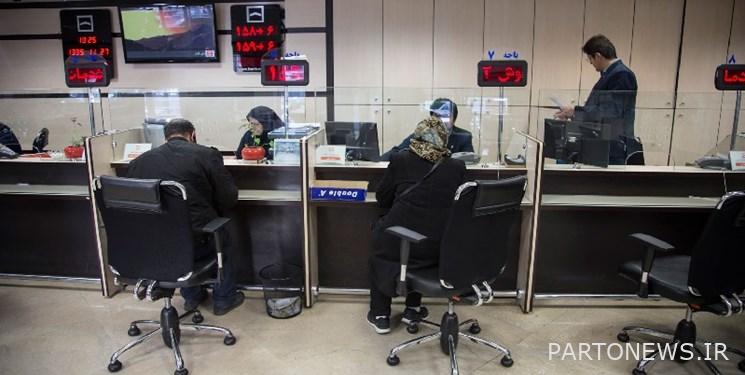The bill of non-transparency of current facilities is a step back in banking transparency

According to the economic reporter of Fars news agency, the government has recently sent a bill to the parliament to amend the budget law of 1401. Article 4 of this bill declares that in paragraph (d) of Note 16 of the country’s budget law, after the phrase “facilities and obligations”, the phrase “non-current” is added and the current phrase is added. overdue deleted.
In fact, this bill states that from now on, only information on non-current facilities will be published, which according to the head of the National Inspection Organization, only 8% of the total balance of facilities in all banks of the country is related to non-current facilities.
* Note 16 of the budget and transparency law of banks, is it for the benefit of the people or to their detriment?
Analyzing the effects of this bill, Ali Sobhani, an economic expert, tells Fars: Clause (d) Note (16) of this year’s budget law is 100 percent in favor of the people; It clearly specifies in which sectors the bank’s resources have been used, who received these resources and who did not repay them. Why is this important? When a bank is established, the bank is allowed to create money and allocate money based on the legitimacy provided by the government, and the philosophy of establishing the bank is to help economic growth, and our banks should be wings for economic growth.
He stressed: If the banks’ facilities are not transparent, the banks may use it for their own interests and the interests of their shareholders, and it is not in the public interest, or they may invest in cases where financing is not produced, and this may cause big blows to the country’s economy. hit or make our economy stagnate.
The economic expert added: Apart from this issue, when the bank facilities default, the overdraft from the central bank increases or the banks’ debt to the central bank increases, which in any case increases the monetary base, which is one of the factors of increasing liquidity and inflation.
Sobhani continued: When some people receive a facility and do not repay it, they benefit, that is, they received a facility and spent it, but the people see the harm of this. Because the inflation rate increases and the inflation rate in turn increases the Gini coefficient, so it increases the class gap and has a negative effect on economic growth and reduces investment.
He admitted: the legislator emphasizes transparency in clause (d) of note 16 of this year’s budget law; This transparency increases the cost of facility defaults, and this measure reduces facility defaults and non-current facilities, and as a result, all people benefit from it.
The economic expert stated: When transparency is done at the macro level, including macro facilities, both current and non-current, it helps researchers and experts to draw the liquidity map of the country. Now the liquidity of the country has greatly increased and it is important to know where and in whose hands the created money is. Then we can observe which sectors have benefited from the liquidity obtained from bank facilities, the public sector or the private sector? Transparency helps experts to have detailed analysis about which persons or sectors are allocated payment facilities, so that if the banking system is to be reformed, based on these statistics, we know which sectors should be investigated.
* Central Bank’s effort to control the growth of banks’ balance sheets
Sobhani further said: Now the central bank is trying to control the growth of banks’ balance sheets, and this is a good thing, as its continuation in the long run will lead to a decrease in the inflation rate. Another point is that currently it is the banks that decide what type of facilities to control, they may decide to reduce micro facilities or reduce macro facilities. If the growth of the balance sheet is to be controlled and the banks put pressure on the micro-facilities, the result is that people will face many problems to receive the facilities with small amounts and in the end they will not be able to benefit from it. But if large facilities are controlled, it is logical and it seems that the central bank’s goal was also large facilities.
He admitted: The question is, how can it be determined that our banking network was able to succeed in this matter? The answer is that it will be clear from the transparency of the facilities granted by the banks; Because the current and non-current nature of payment facilities clearly determines how the banks have behaved.
Bank transparency will not be questioned with the recent government bill?
Sobhani said about the bill to remove current facilities from the information published by the Central Bank: We want to check how the banking system works. Therefore, we must be fully aware of how and to which parts the entire facility was paid. The total non-current facilities, according to what the central bank announced, represent a very small part of the entire performance of the banking system, and this is very important.
He added: 90 to 95 percent of banks’ assets are facilities that they pay, and only 6 to 8 percent of this number are non-current facilities. If we are not going to make the current facility transparent, that means we have hidden a large part of the functioning of the banking system, then how do we want to analyze the performance of the banks.
He added: All the facilities that are now non-current and have not been paid were initially current, if the current facilities are transparent and loss-making companies that have huge losses take facilities from the banking system, public opinion and the media will put pressure on the banking system that why these facilities is paid. Also, the transparency of current facilities helps to reduce non-current facilities in the future; Because the banking system pays facilities to deserving people in the light of the law of transparency, because they know that it is in a glass room and everyone knows who received and reimbursed these facilities. Therefore, it should not happen that only non-current facilities become transparent, it is important that current facilities are also transparent.
Are banks pressuring the government to abolish performance transparency?
The economic expert stated: Article 4 of the budget law amendment bill 1401 will be a retrograde because the transparency of large facilities reached a stage with good media pressure and serious determination in the Ministry of Economy and the Central Bank. All experts and researchers hoped that this process would continue. The same transparency that took place was not complete because they could have published more complete and transparent information. A number of parameters were not observed in this list.
Sobhani said: If we take a step back from the transparency that was achieved, there will be a possibility that in the future they will also stop the transparency of non-current facilities and this will be a setback in the banking system and will cause problems for experts and researchers. . The importance of transparency is not only from the perspective of preventing or controlling corruption, but it is also very important for the purpose of expert investigations and data analysis, in addition to identifying bank corruptions.
He added: Whether the banks have a role in the government’s bill regarding the amendment of the budget law 1401 and its article 4 or not, commenting is based on possibilities, because we don’t know about the behind-the-scenes. When the performance of banks becomes transparent, they are under the pressure of public opinion and media, and if they have a weaker performance, they are worried that people will want to transfer their deposits from that bank to another bank.
The economic expert admitted: But more likely than this, there are people who have received this facility; For example, public opinion is pessimistic about a company that has received facilities and is loss-making and receives facilities several times despite delays and losses, and its brand is damaged and its products face problems. Regarding the possibilities of inserting the amendment in paragraph (d) of Note 16, it is not only the possibility of banks, but also state companies and Qusulti may also be effective.
Sobhani stated: We can be hopeful about the parliament’s defense of the transparency of macro-facilities, because some representatives were in favor of the transparency of banks and tried to prevent this government bill from being voted on to amend the budget law.
end of Message/
You can edit this article
Suggest this article for the first page

